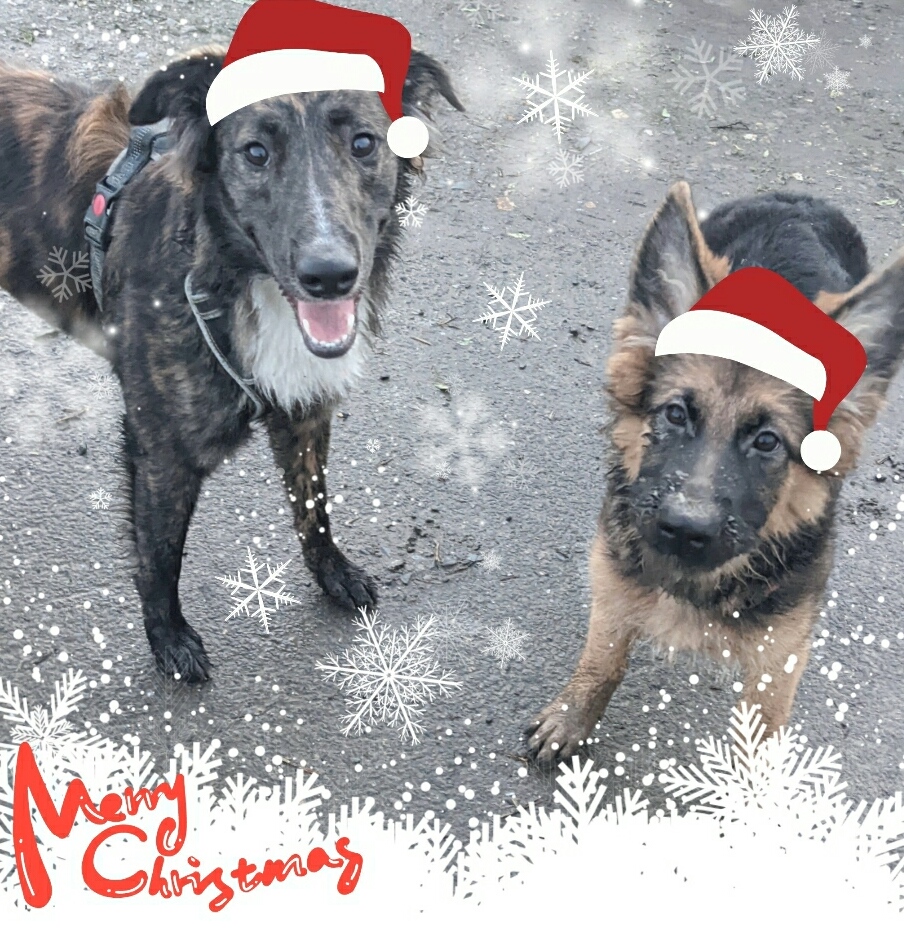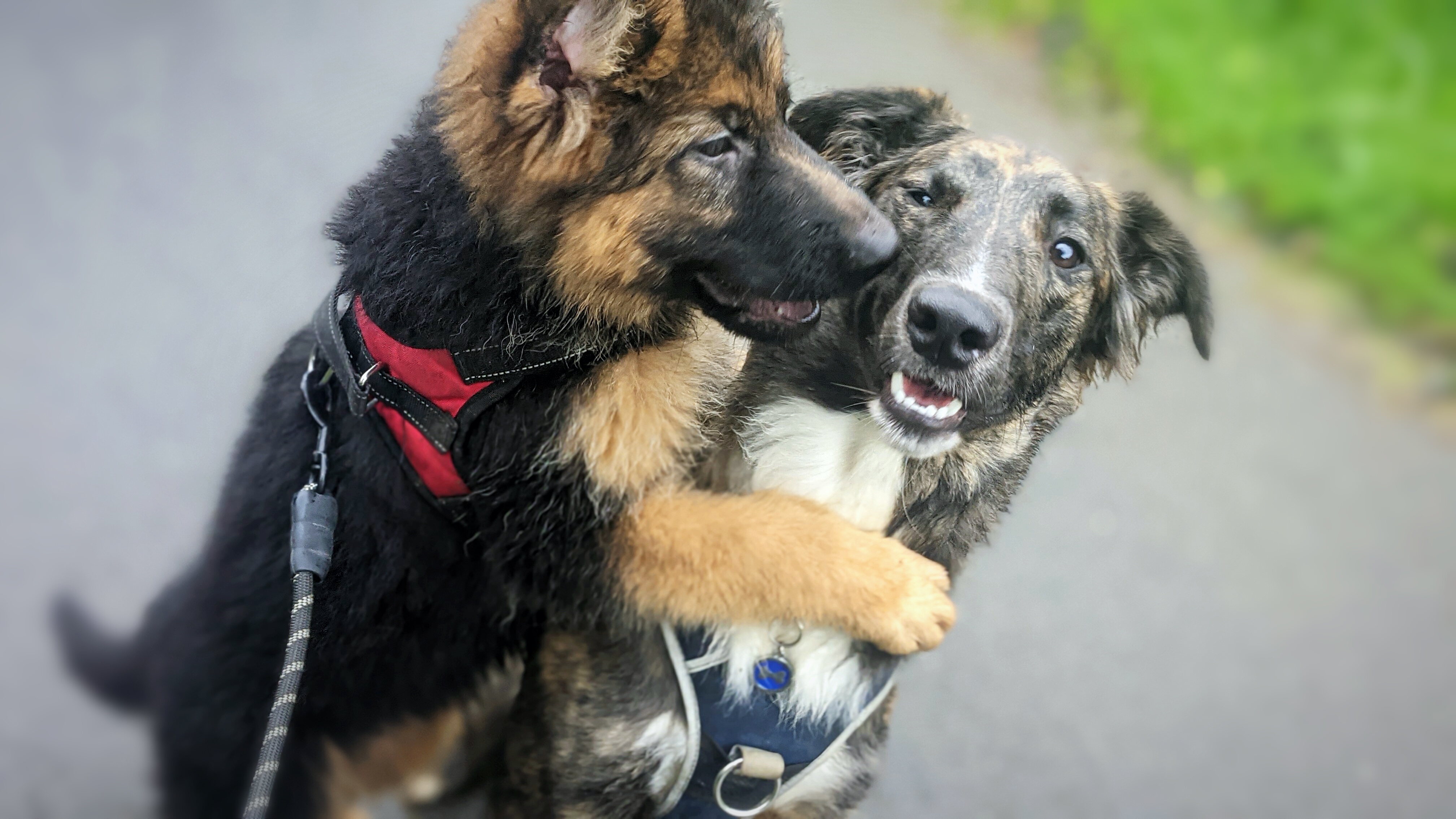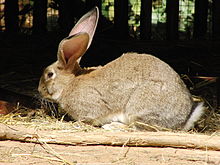Puppy Tails (4)
So life at the moment is very hectic (hence missing doing posts for March and April) but hey ho life goes on! Let’s talk about the pups…
Rollo turned 1yo in January and was treated to a birthday biscuit (decorated like a cake) and he shared some pupcakes with Brina! They were treated to tuna and veg pasta for dinner – as I wanted to make a bit of a fuss, even if he had no idea why!


His teenage behaviour (due to teenage hormones) was not improving after this milestone and he began to ignore known commands when he wanted – not a good advertisement for a dog trainer! Still, I persisted and had been asking my vet about neutering him, as I know from experience that this can help with getting behaviour back on track – my vet however kept telling me he needed to be 18mo before they would neuter him. I’d always been taught at uni, and been informed by vets, that a male dog can be neutered from 6mo onwards. Needless to say, I was not wanting to put up with this behaviour from him for a few more months, so I posed the question to a few other local vets who all confirmed they would neuter a male dog from 6mo onwards – he was done growing and there was no reason not to.
So, we changed vets, got him booked in and he has recovered marvelously! His behaviour post-recovery is almost back to pre-teenage behaviour and he’s a lot more responsive to training again! He’s still hyper focused on the squeaky ball, which is a walkies only toy (to avoid him getting bored of it) but he will do most commands without the prompt of toy or treat, just like before 😊


And then there is Brina. Little Brina. Not so little anymore (she was in the photos in “Puppy Tails (3A)“)… She is almost 10mo now and has just recently come into her first season. This is new for me as I’ve only ever owned male dogs, or dealt with bitches well established in their seasons (not in a home environment). So I’m dealing with all the behavioural changes that come along with this – for her and for him! She’s gotten a lot more snuggly and in need of a lot more physical contact with her humans and a lot less tolerant of Rollo’s attention.
So a bit more on Brina, our German Shepherd Dog (GSD) up to this point – she adores Rollo, she follows him everywhere and certainly has ‘fear of missing out’ (FOMO) if Rollo is doing something she’s not involved with, even if she’s not interested! He loves a good tug of war or game of fetch, but she was always just interested in running alongside Rollo or jumping on him whilst he’s playing tug of war with one of his humans, as opposed to actually getting involved in play. They love to play fight and I’m sure to the untrained eye they’d look/ sound like they were trying to kill each other sometimes! The key thing is the play sneeze you’ll hear throughout, meaning that they do love each other really 😊


Brina is the most vocal doggo I’ve come across (not counting working in kennels, with multiple persistent barkers) – I can’t decide if this is a GSD thing or a bitch thing or just her! She talks to her toys, in her sleep and to anyone who will listen – as well as being very loud when she can’t keep up with Rollo (his zoomies are fast!) or when her FOMO kicks in 😜
Her on-lead walking has very much improved, with the help of the Gentle Leader when necessary, as she is a puller! Training aids, such as a Gentle Leader, can be instrumental in getting the desired behaviour – which I hope to go into in more detail in the next “Puppy Tails” post. The aim is to have her walking nicely without the aid of the Gentle Leader (but with her pulling strength and my health issues, the Gentle Leader has been a major help) and I’m confident we’ll get there!


Despite them both being a bit of a handful at the moment due to her hormones affecting her and Rollo, they’re still very much snuggle buddies and friends.
I am hoping the next installment of “Puppy Tails” can be a bit more training focused relating to their individual stages of life and training levels, with some insight into the training process.
To read the previous”Puppy Tails” please follow the links below:
• Puppy Tails (1) • Puppy Tails (2) • Puppy Tails (3) • Puppy Tails (3A) •
All images are either open source, Google images, or my own – or photos donated for use by the pet owners.
If you have any questions or comments; please post a comment below, or contact Ali’s Answers via one of the social media pages…
• Facebook (Ali’s Animal Answers)
• Instagram (@alis.animal.answers)
• Twitter (@AlisAnswers)
• LinkedIn (Ali Lloyd)


























































